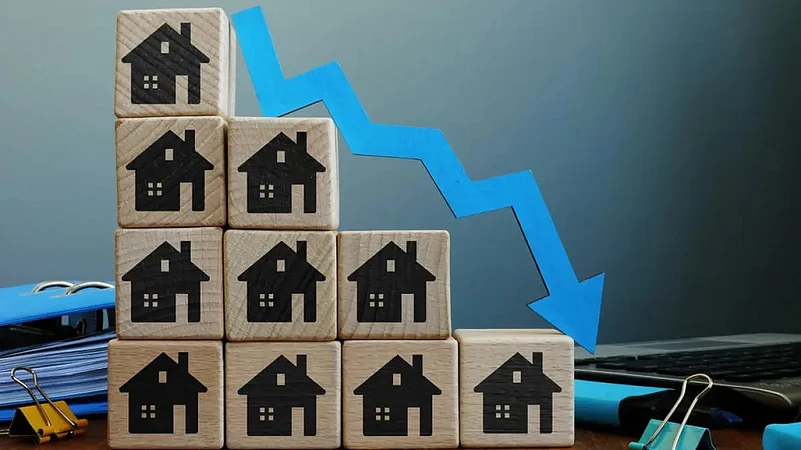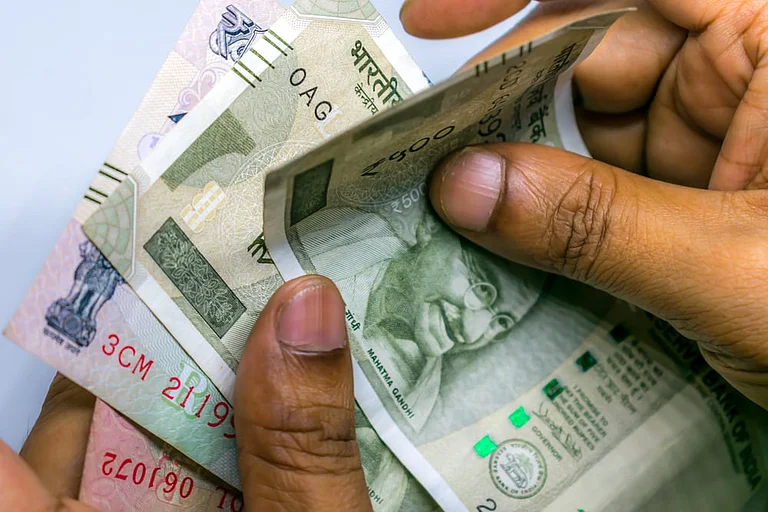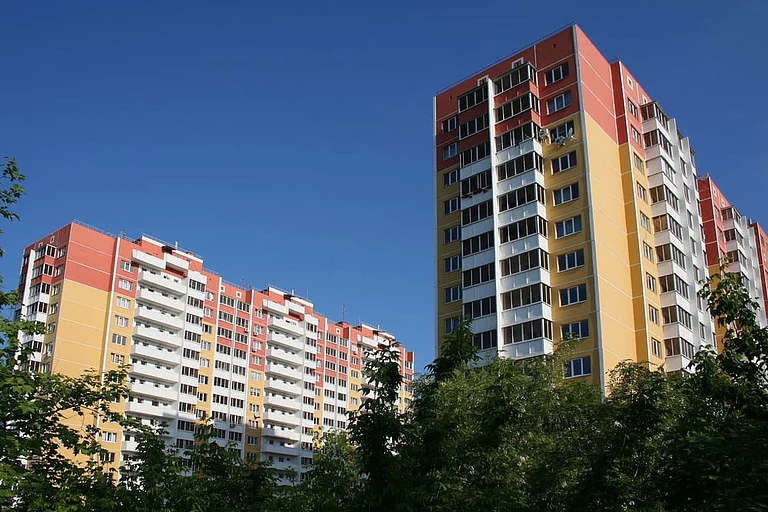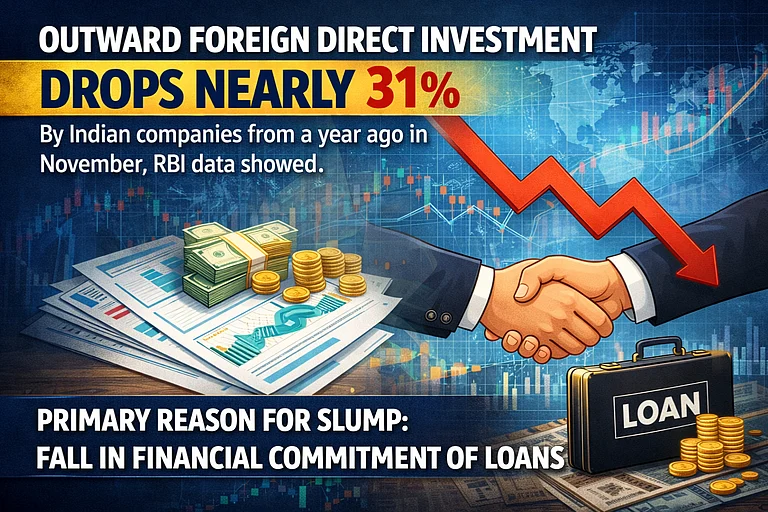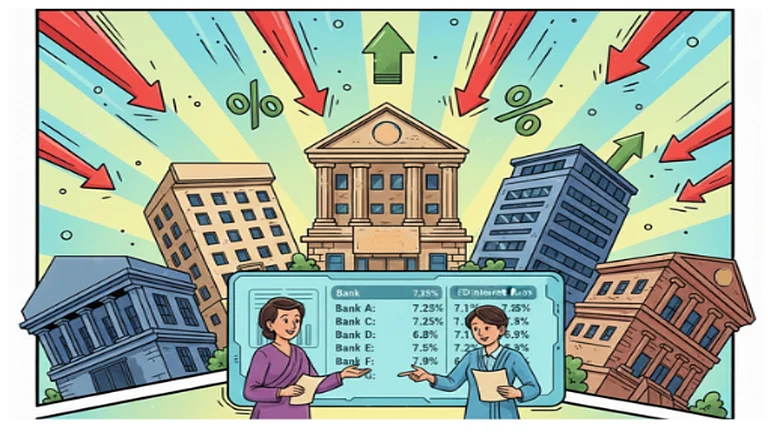For millions of Indians dreaming of owning a home in the country’s top cities, the path to homeownership is getting steeper. The supply of affordable and mid-income housing (homes priced at Rs 1 crore and below) has plummeted by 36 per cent in just two years across India’s nine top cities, according to a report by PropEquity, a real estate data analytics firm.
This trend is more heightened by developers' shift to luxury housing and customer’s aspirations to keep up with the race. The supply of affordable and mid-income housing has dropped from 3,10,216 units in 2022 to 1,98,926 units in 2024, wherein NCR, Mumbai, and Hyderabad are witnessing the worst decline.
Affordable Crunch
The worst-hit city, as per the report, is Hyderabad where the supply of homes in the affordable price bracket has dropped by 69 per cent, leaving only 13,238 units available in 2024. Mumbai, which is termed as the country’s financial capital, has witnessed a drop of 60 per cent with only 6,062 (units) homes priced at Rs 1 crore and below entering the market.
Delhi-NCR and its surrounding areas have fared no better. While the area is seeing more migration of people from Delhi to NCR residential areas and societies, the affordability aspect seems to be vanishing at a rapid rate. The NCR region saw a 45 per cent drop, leaving only 2,672 units for homebuyers in this category.
Other top cities have not seen any rosy picture either. In cities like Bengaluru, Chennai, and Pune which have become a hub for working professionals who seek mid-income housing, affordable housing has seen a double-digit decline.
Pune, for instance, saw a 32 per cent drop in supply in two years and 33 per cent in one year.
Bengaluru witnessed a decline of 33 per cent in two years and 11 per cent in one year.
Housing supply in Chennai stood at 12,743 units in 2024, a decline of 13 per cent in two years and 8 per cent in one year.
Kolkata’s housing supply stood at 10,785 units in 2024, a rise of 7 per cent in two years and a decline of 41 per cent in one year.
Mumbai saw the second least number of units supplied, at 6062 units in 2024. The city registered a decline of 60 per cent in two years and 31 per cent in one year. Navi Mumbai’s housing supply stood at 21,290 units in 2024, a decline of 6 per cent in two years and 10 per cent in one year.
Thane witnessed the highest supply amongst the top nine cities at 57,029 units in 2024. However, this is a decline of 36 per cent in two years and 28 per cent in one year.
What’s behind this sudden squeeze on affordable homes?
According to Anuj Puri, Chairman - ANAROCK Group, “Going by the sagging sales and supply of affordable housing (defined as units priced under Rs 40 lakh) in India over the past few years, it is easy to forget that this segment was once the housing industry’s veritable poster child.”
He adds, “At the developers’ end, constantly rising input costs comprising of land, labour and construction materials (compounded by the low-profit margins of affordable housing and the withdrawal of all relevant fiscal benefits) caused their previous enthusiasm for affordable housing to dwindle. Instead, they turned their focus on what was and continues to sell well - bigger units with good lifestyle amenities.”
The PropEquity report shows that the supply of homes priced Rs 1 crore and above has risen by 48 per cent in the last two years in the top nine cities as follows;
Bengaluru: 187%
Chennai: 127%
Kolkata: 58%
Navi Mumbai: 70%
Thane: 53%
Pune: 52%
Delhi-NCR: 192%
However, Hyderabad and Mumbai saw a decline of 11 per cent and 14 per cent respectively in the last two years.
Follow Outlook Money's Complete Coverage of Union Budget 2025 Here.
What This Means For Homebuyers
The dream of owning a home in these cities is becoming increasingly distant for middle-class buyers. With salaries not keeping pace with skyrocketing real estate prices, many are left with limited choices, either stretching their budget uncomfortably, opting for smaller homes or shifting to distant suburbs where infrastructure may not be as developed.
Says Samir Jasuja, Founder and CEO, PropEquity, “Today, 8 per cent of India’s population live in tier 1 cities and this number is expected to grow exponentially in the next five years as more people move to these cities for employment opportunities. The lack of supply in this category, if not attended to in time by the Government, will lead to a housing crisis akin to Australia and Canada.”
He further adds, “In view of rising migration and a growing number of nuclear families, it is estimated that 1.5 crore homes would be required in these cities in the next five years.”
What can be done to address this problem?
As calls for government intervention are growing amid developer segments, Jasuja says that “the Government must not just incentivise developers through tax cuts and subsidies in order to make affordable and mid-income housing a viable option but also provide benefits to homebuyers in the form of home loan rebates, stamp duty cuts etc.”
The soaring prices have not only threatened to vanish the affordable housing segment but have also led to a gradual tapering down of luxury housing as well.
Says Puri, “This may trigger an inflexion point where the cycle can once again turn positive for the affordable segment. Any substantial announcement for the affordable housing segment in the upcoming Union Budget can strengthen the trend and give affordable housing a seriously needed leg-up.”

